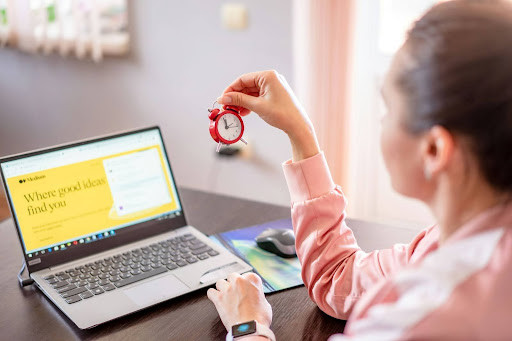When Is Business Efficiency Optimal?

Every business owner rightly strives to become more efficient. In many ways, efficiency is at the heart of productive business operations; the more efficiently your business can operate, the more money it stands to generate.
This is easy to prove with a simple example. Imagine that it costs you $50 of labor and materials to produce a product, and you sell that product for $60, making a $10 profit. By improving the efficiency of your organization, you might be able to reduce both labor and material costs by $10, ultimately leading you to a $40 cost and a $20 profit.
But how do you know when your business is efficient enough? In other words, when is business efficiency considered optimal?
Measuring Efficiency
What does it mean for a business to be efficient? Usually, we mean achieving the greatest possible output with the lowest possible costs. But there are some obvious limitations on this, since we typically can't produce products for $0 and zero effort.
Efficiency is a relative term, and one that can be applied to a wide variety of contexts, so unfortunately, there's no universal standard here. We can think about cost efficiency, labor efficiency, resource efficiency, and even process efficiency, as well as dozens of other types of efficiency related to these categories.
What's most important here is that you have a consistent, objective way to measure your business efficiency, so you have a reliable benchmark to guide you to improvements.
When Is Efficiency Suboptimal?
There are two ways that efficiency can be suboptimal, with one being more obvious than the other. First, efficiency can be suboptimal because you're wasting something – or at least, you're wasting something more than necessary. That could mean spending too much money, using too many resources, or simply working too many hours. There is obvious room for improvement here, and you're losing money by not attempting to improve.
Second, and less obviously, the pursuit of efficiency can become suboptimal when it costs more to make efficient improvements than the efficient improvements can possibly benefit you. For example, consider a technology that costs $100,000 that can save you $0.01 of materials per year; this acquisition will objectively make your operation more efficient, but it might hypothetically never pay off.
This is an important consideration because we often neglect the costs of pursuing efficiency. New technologies, new processes, new workflows, and ongoing experiments cost you time and money. It's important to avoid overspending in pursuit of only marginal gains.
Limitations on Optimal Efficiency
There are several limitations on optimal efficiency, including:
· Market conditions. Sometimes, market conditions can hold you back in terms of efficiency. If you don't have reliable partners or sources for materials, you might not be able to run as efficiently as you otherwise could.
· Resource availability. Resource availability is also a potential limitation. If you can't get the products or resources you need, you won't be able to operate efficiently.
· Physical limits. There could be physical limitations in play as well. Human beings can only work so hard, and there are only so many transistors we can fit on a chip.
· Technology limits. Technology limits also play a role in dictating the upper limits of efficiency. We can only do what the tools of our modern age allow us.
· Human fallibility. Human beings make mistakes. We aren't designed to be perfectly efficient creatures. Accordingly, almost any process involving a human is going to be suboptimal by definition.
When Is Enough, Enough?
How can you tell if you've made enough improvements to your business efficiency?
· You've made considerable progress. First, you can feel more confident if you've made considerable progress already. If you've reduced several costs and input factors and you've achieved greater outputs, take a step back and pat yourself on the back.
· You've bumped up against firm limitations. Second, you might notice that you've bumped up against very firm limitations. For example, you might have reduced your total resource waste to a tiny fraction of what it was before. No matter how you tweak things, you can't seem to eliminate that final fraction.
· You don't know what else you can change. Third, you might run out of ideas. If you've already consulted with your team and other experts, and none of you have thoughts on how to move forward, you might have reached an optimal place.
The Ongoing Process of Efficiency Optimization
Most businesses are never going to reach perfectly optimal efficiency. Unfortunately, that's just the nature of the game, because the business landscape is constantly evolving. For most business owners, the correct approach is to practice ongoing efficiency optimization, running ongoing experiments and making constant tweaks to gradually inch closer to that perfection ideal.
© Copyright IBTimes 2024. All rights reserved.





















